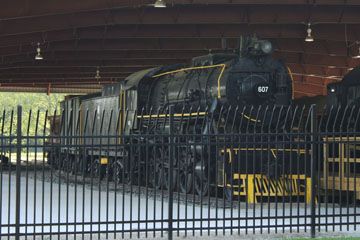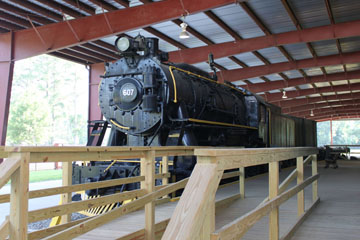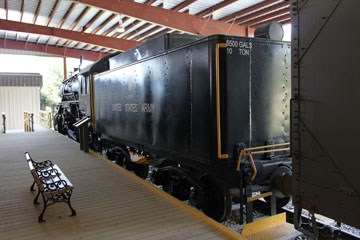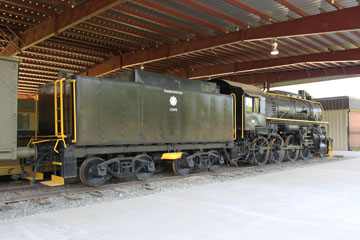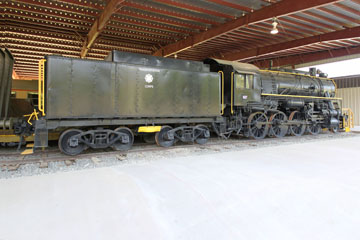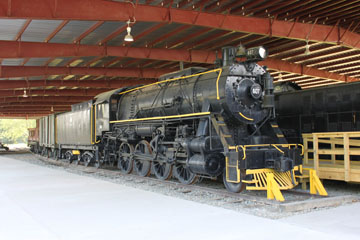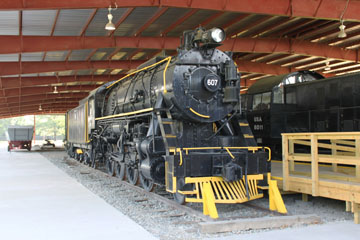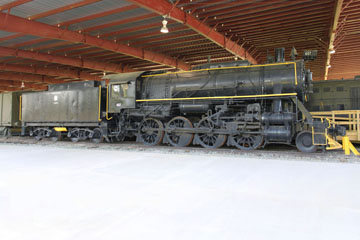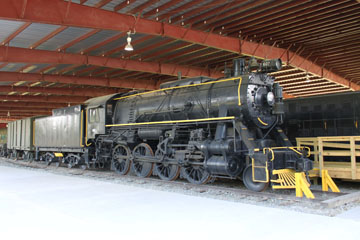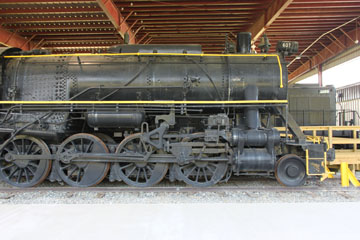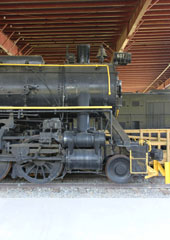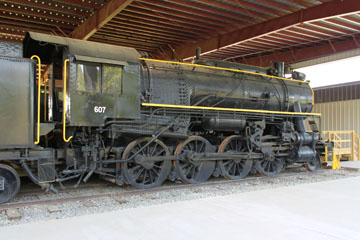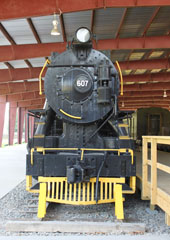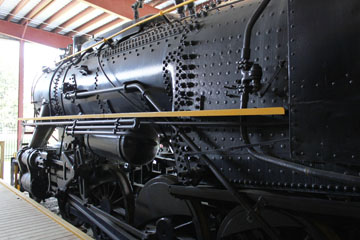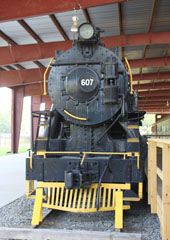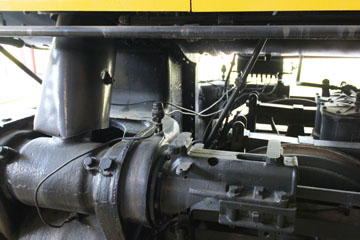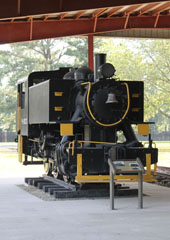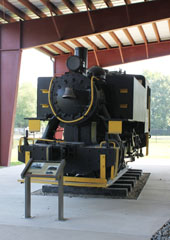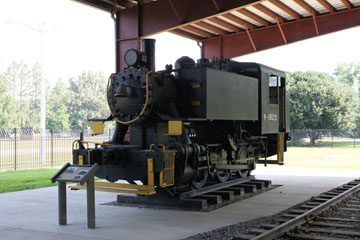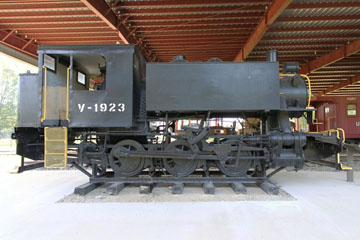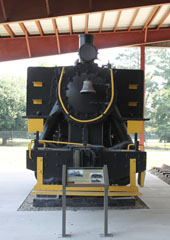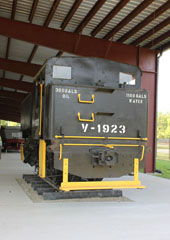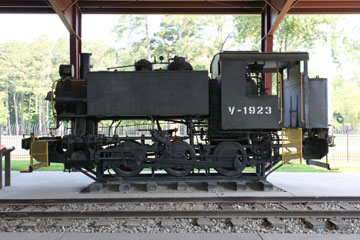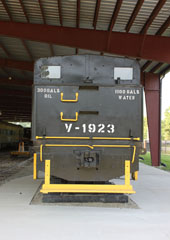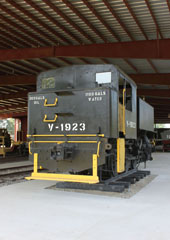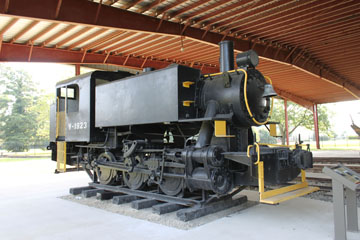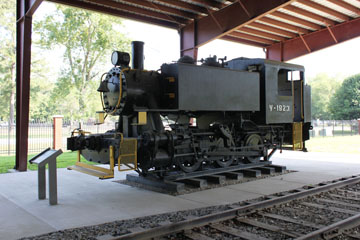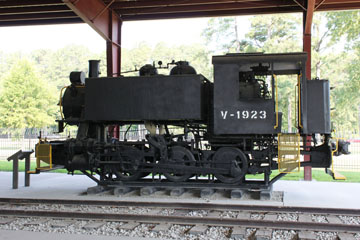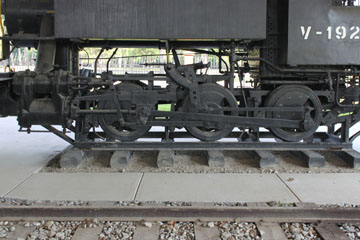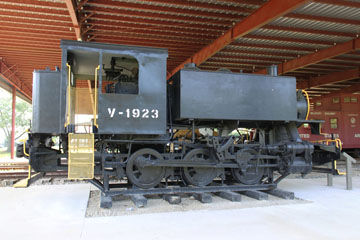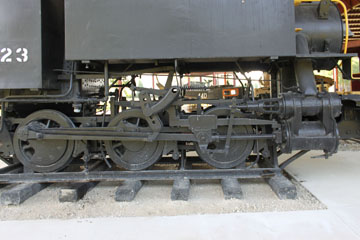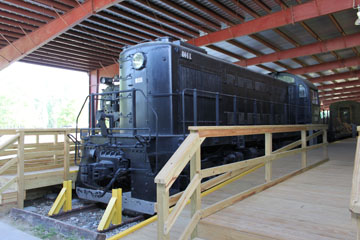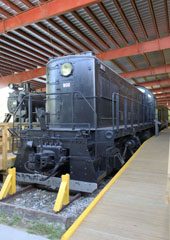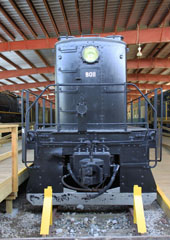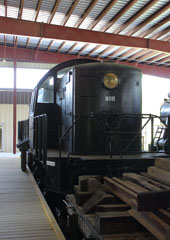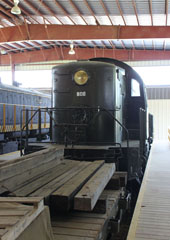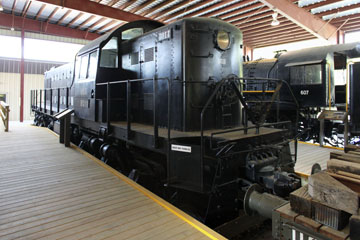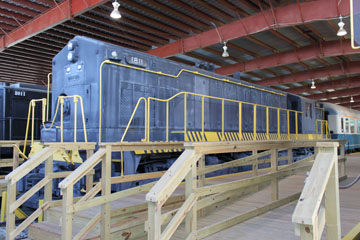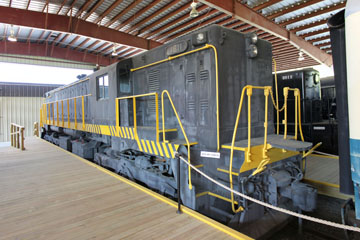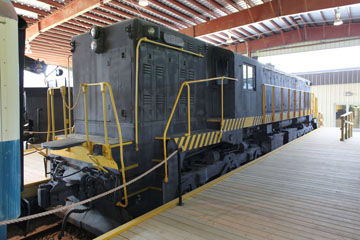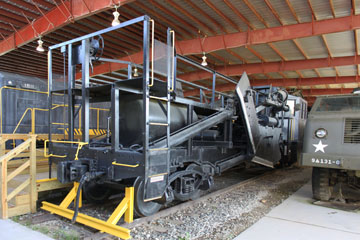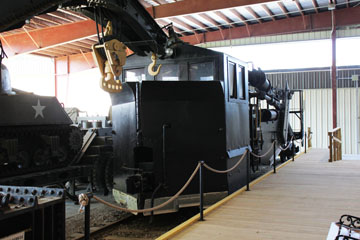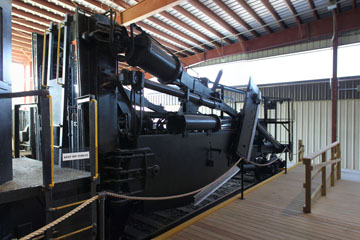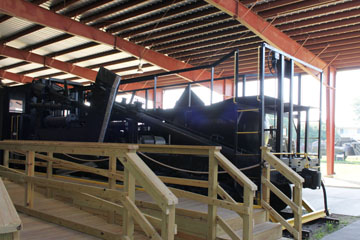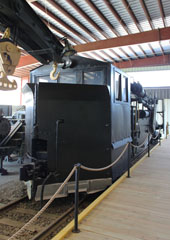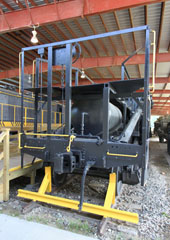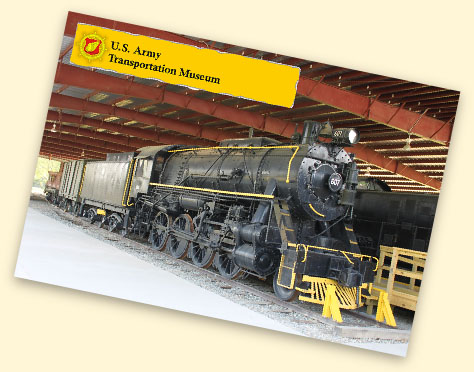

The US Army Transportation Museum was established in 1959 and is one of the largest museums in the Army Museum system, devoted entirely to the history of US Army transportation from colonial days to the present.
The museum is on the Fort Eustis Army base at 300 Washington Blvd, Newport News, VA, and is open Tuesday - Sunday from 9.00 am until 4.00 pm. Because the museum is on an active military installation, a check-in at the guard station, a possible vehicle search and a visitor's pass are required. The museum has a gift shop and reference library where research may be undertaken with advance request.
The collection includes nearly one hundred large scale objects, from aeroplanes to tugboats, landing craft to jeeps, hovercraft to trains. About one quarter of the collection comes from public donations and the remainder from transfers, bequests and other sources. The rail section includes two steam locomotives, two diesel-electrics, a Jordan spreader and a collection of other rolling stock including freight cars and maintenance of way equipment.

This Consolidation type (2-8-0) locomotive was built in 1945 by the Lima Locomotive Works for the US Army as #5187 and was one of the last steam locomotives built by the manufacturer.
With America's entry into WWII in 1941, the US Army Transportation Corp needed a design from which to create a body of motive power that could be used on the railways in Europe. The design is credited to a committee headed by Major J. W. Marsh of the US Army and including design engineers from the three major US locomotive builders, Alco, Baldwin and Lima.
The design was based on austerity principles and built using methods that permitted fast and efficient construction and ease of
maintenance.
The design included axlebox grease lubricators and rolled plates instead of castings, and the front two driving axles were sprung independently from the rear two driving axles to allow for running on poor quality track. It has been suggested they had an intended working life of about ninety days, after which they were expected to be damaged in one way or another.
#607 was never sent overseas and initially served in Marietta, GA. In 1946, it was moved to Newport News, VA, and arrived to work on the 31 mile Fort Eustis Military Railroad in 1952, which provided railroad operation and maintenance training to the US Army. It was the last US Army steam locomotive in operation, transferring under steam to the museum in May 1972.
Twenty-five S160s have been preserved, seven in the US. You can see photos of one of these, #606, on the Crewe Railroad Museum page of this website.
The S160s did suffer a quite high failure rate, tending to develop hot driving axle boxes, while those fitted with thermic siphons often suffered from leaks and tubeplate cracks. There was excessive corrosion and fatigue of the firebox crown bolts. As a result, there were five incidents of the crown collapsing while the locomotives were in service in the UK.
Two thousand, one hundred and twenty of the engines were built and deployed on railroads in Africa, Asia, all of Europe and South America between 1942 and 1945.
The S160 weighs 161,000 lbs, 140,000 lbs on its 57” drivers and has an engine wheelbase of 23’ 3” and driver wheelbase of 15’ 6”. It is equipped with Walschaert valve gear and 19” x 26” cylinders. The grate was 41 sq ft, the firebox 128 sq ft and the total heating surface of 2,236 sq ft included 471 sq ft superheating. Operating at a boiler pressure of 225 psi, it delivered 31,493 lbs tractive effort.
The tender weighs 115,000 lbs light and has a capacity of 6,500 gallons of water and 9 tons of coal.

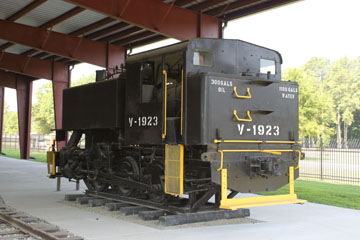
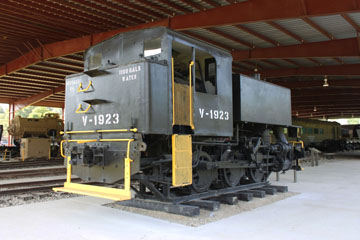
Oil burning 0-6-0T (Tank) locomotive V-1923 was one of the last narrow gauge (42”) engines built under Army contract in 1942 by the Vulcan Iron Works in Wilkes-Barre, PA. Three hundred and eighty-two of these locomotives were built for service in Japan, Australia, Sudan, West and South Africa and New Zealand by Davenport, Porter and Vulcan.
V-1923 weighs 70,000 lbs and has 14” x 18” cylinders and 36” drivers. It arrived at Fort Eustis in 1945 and was used it for student training at the Transportation School from 1953 to 1959.

This unit started life as Alco RS-1 #902, a 4-axle diesel-electric unit built for the Atlanta and St. Andrews Bay Railway as #902 in March 1941.
Four hundred and sixty-nine RS-1s were built by Alco-GE between 1941 and 1953, and then by Alco from 1953 to 1960, making it the longest production run of any diesel locomotive for the North American market. The RS-1 also pioneered the road switcher type, and most switchers built since then have followed the design. The set-back cab provides greater safety in the event of a collision than earlier switchers.
After the outbreak of war in 1942, #902 was one of thirteen RS-1s built by Alco and requisitioned by the US Army for service overseas.
The engine was remanufactured into a C-C design six-axle locomotive (three powered axles per
truck), re-designated RSD-1 #8011, and shipped to the Persian Gulf for use on the Trans Iranian Railroad where it spent most of its war time
life. After the war, it went into storage for six
years, then worked for the Alaska Railroad as #1034 for five years before returning to the US Army in 1956.
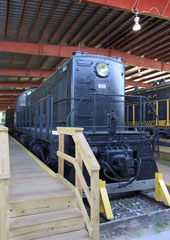
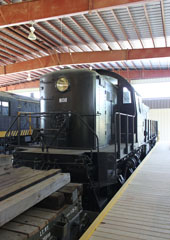
In 1974, #8011 went to Pueblo, CO, as DOT #103.
In 1984, it was the first diesel to enter the
Smithsonian collection and was loaned to the Railroad Museum of Pennsylvania (you can see photos of it there liveried as ARR #1034 on the Pennsylvania Railroad Museum Yard page of this website). It was moved to the Army Transportation Museum in 2011.
54' 11" long and weighing 204,000 lbs, the RSD-1's 539T-6L 4-cycle prime mover powers a GE-GT553C generator to drive four GE 731 traction motors. It delivers 51,000 lbs tractive effort at 25% and 34,000 lbs continuous tractive effort at 8 mph and has a top speed of 60 mph.
Five RSD-1s have survived. You can see them on the Orange Empire Railway Museum page of this website, the Mt Ranier Scenic Railroad page, the Museum of the American Railroad page, the National Railroad Museum page and the Tennessee Valley Railroad page. You can also see other surviving RS-1s on the National Museum of Transportation, St. Louis Yard page, the Hoosier Valley Railroad Museum page, the Tennessee Valley Railroad page and the Gold Coast Railroad Museum page.

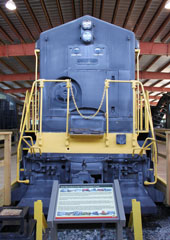
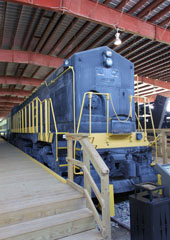
EMD built a total of thirteen MRS-1 diesel-
electrics in 1952, as did Alco, working to the
same specification. After testing, seventy more were ordered between 1953 and 1954, all from
Alco.
“MRS” stood for “Military Road Switcher” and
the units were designed with the prospect of another land war in Europe during the “hottest” years of the Cold War, so were equipped with adjustable trucks to fit different railroad gauges, compact bodywork to accommodate restrictive rights of way and replaceable couplers. The land war never eventuated, however, and most of the units went to military installations around the country.
Weighing 380,000 lbs and 67' long, #1811 is equipped with a 567B 16 cylinder prime mover powering a GM D22 generator to drive six GM D27 traction motors, one on each axle. It delivered starting tractive effort of 90,800 lbs at 25% and continuous tractive effort of 95,000 lbs with a top speed of 83 mph.
#1811 came to Fort Eustis from the Sunny Point Army Depot, NC, some time between early December 1995 and January 1996.

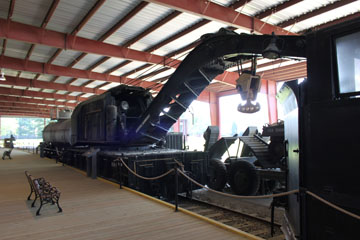
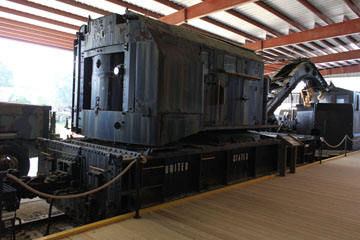
This 75 ton wrecking crane was built by the Industrial Brownhoist Company in Bay City, MI, in 1952.
The Industrial Works was established in 1873, built its first crane for the Chicago & Western Illinois Railroad in 1883 and went on to become a major producer of cranes as Industrial Brownhoist. You can see other Industrial Brownhoist cranes on the Ogden Union Station page, the Gold Coast Railroad Museum page, the Pennsylvania Railroad Museum Yard page, the B&O Museum Yard & Car Shop page and the Virginia Museum of Transportation page.

This spreader is a Roadmaster type built by the O.F. Jordan Company in Chicago, IL. It is unusual in having a cab with a rear entrance, apparently custom-built.
The Jordan Road Master was introduced around 1952 at the same time as the Standard Line. It upgraded the Standard design using some of the options typical of the Type A spreaders of the time, namely the bi-direction front nose blade. Road Master Spreaders also used many Standard line parts, such as the wings, diagonal braces, frames and cabs.


